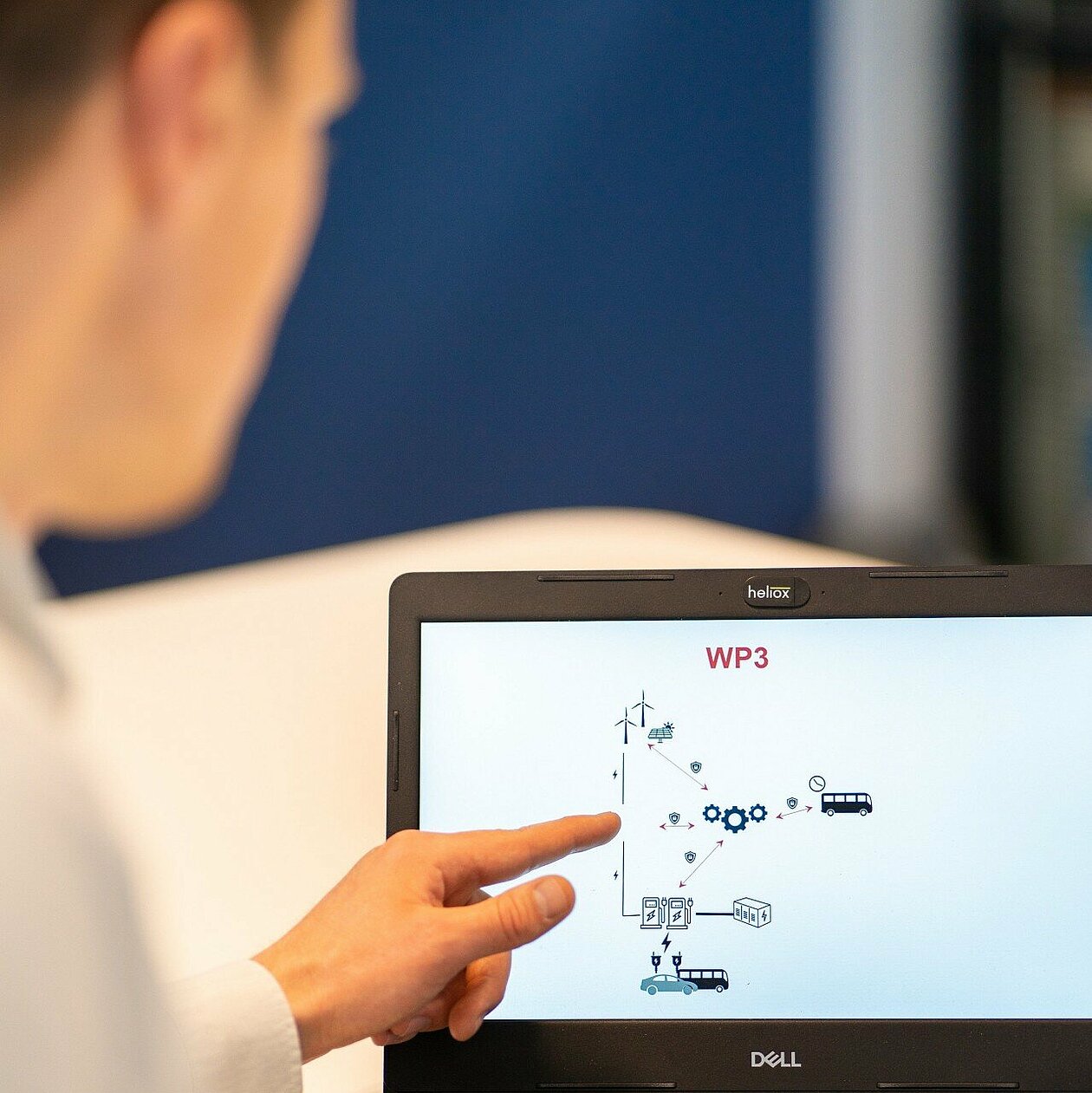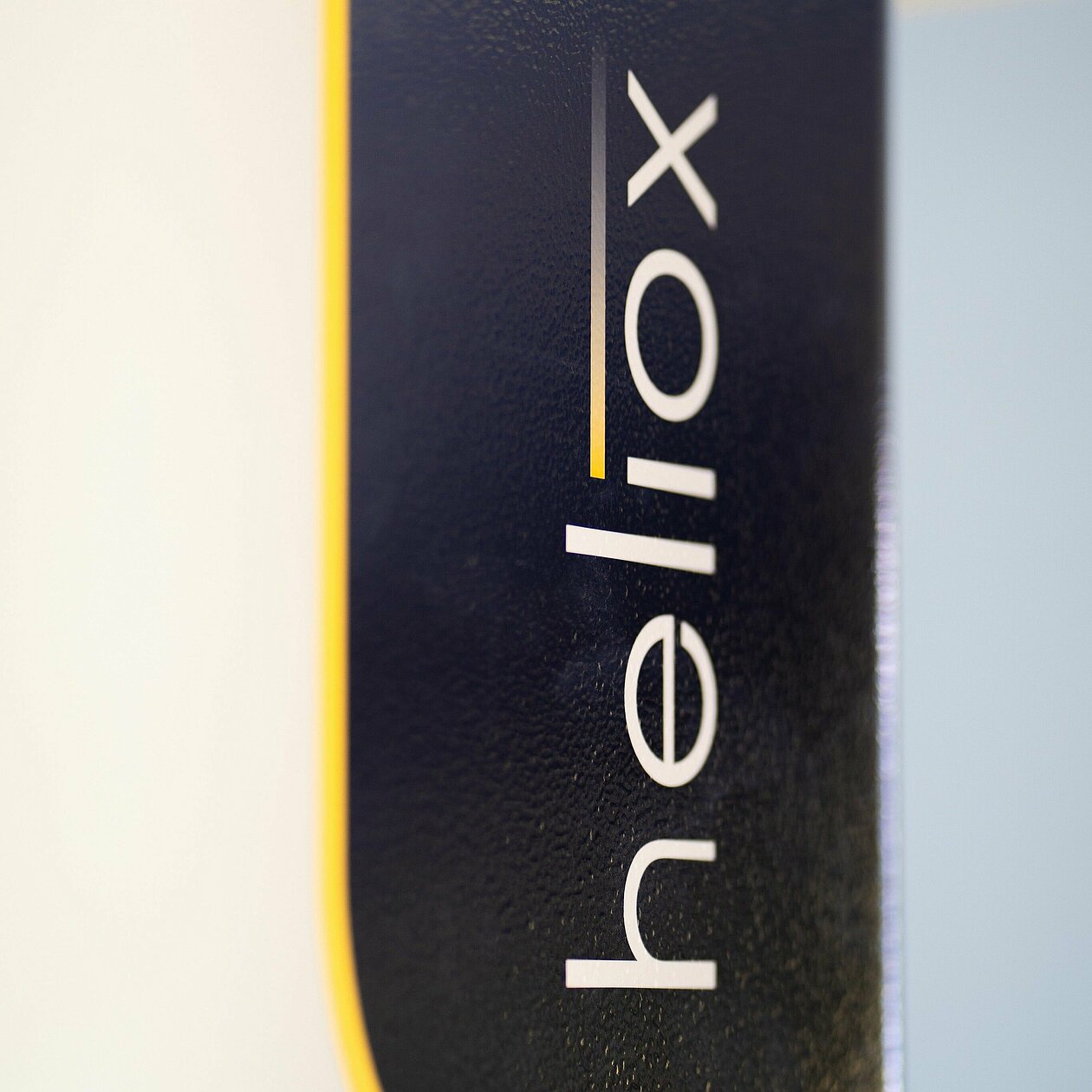Interview with Jaap van de Wiel, Heliox for DITM

'This way, we ensure that energy is transported in an efficient, safe and robust manner.’
DITM stands for Digital Infrastructure for Future-Proof Mobility, a national project, which is funded by the Dutch government. As part of the project, Brainport Development and RAI Automotive Industries are working with partner companies to implement the digital infrastructure for automated transport. Enabling us to organize our mobility in a more efficient and safe way. We focus, among others, on innovative digital map production systems that produce, and update maps based on the road infrastructure’s continuous sensor observations and the increasing number of "smart" vehicles on the road.
Please introduce yourself!
My name is Jaap van de Wiel and I have been working for Heliox for four years now. Heliox manufactures, installs, and maintains charging solutions for mobility. We offer the full package. We supply hardware, such as chargers, and software, but also provide services, including monitoring and managing of charging facilities. We focus on chargers for heavy transport, like buses and trucks. The electric buses you see in Eindhoven, for example, are charged by Heliox. At night when they are stationary, they charge slower to not exhaust the grid. And during the day, we use high-power chargers depending on grid availability. Meanwhile, we make sure that all vehicles are running according to their timetable.
Initially, I mainly worked on product development. For the last year and a half, I have been working as a program manager and mainly focused on developing software systems to remotely control and monitor chargers. The ultimate goal is to allow users to remotely check the charger’s proper functioning and control the input and output. As part of that role, I became work package leader of the Digital Infrastructure for Future-Proof Mobility (in Dutch: DITM) project. Digitization will play an increasingly important role within the mobility and energy sector and the project’s goal has a lot in common with Heliox’s software developments. Hence, a great match. The DITM project started in October 2022 and cooperation between all parties is going well.
What is the objective of the DITM pillar you are working on?
The goal of our work package is to develop a system that serves as a physical infrastructure for chargers and batteries and as a digital infrastructure for the environment, such as the grid operator, energy supplier and vehicle. We can use such system to create an ecosystem that can make the digital and physical connections in a secure manner and at the right times. This way, we ensure that energy can be transported in an efficient, secure, and robust manner.

The idea is to create a secure system, using current connections more efficiently. This way, we will reduce investments in the electricity grid, limit the number of cables in the ground and increasingly use local renewable energy. Allowing us to charge at lower cost and on time, while requiring less capacity from the (electricity) grid. To realize this idea, we are mainly focusing on digital infrastructure within DITM. Which element should communicate with which element and at what time? And what are the technical requirements? If we can realize such a system in the Netherlands, it will serve as an example for the European market.
A team of ten specialized partners from different industries are involved in this project. Think of IT, automotive, charging infrastructure and energy management. In addition, we strongly focus on security. Security is important now, but it will even be more important in the future. In the Netherlands, the number of charging stations being installed is still relatively small but that number is growing extremely fast. In a few years' time, there will be enough charging stations to cause serious damage if they all break down at the same time or if they are used in the wrong way.
One of our goals is to have this system certified as critical infrastructure, like the gas pipelines, for example. This way, the stability, robustness and reliability of this and future energy management systems will be guaranteed and tested. This is important, because in the future these systems will play a major role on the energy grid.
However, this still requires quite some effort, and we still have quite a few steps to take. As work package leader, Heliox is responsible for coordination of the project. Furthermore, we develop a large part of the system, such as the charging infrastructure and the digital 'control' platform.
The project will last four years, and we are currently in the specification phase. After the summer, we will start creating the design and by the end of 2024 we, jointly with the other partners, want to start building the first prototype. We will probably build the prototype in our lab, focusing on the software. We will test the prototype for one year, including its security. One of the partners will organize a hackathon for example to detect any weaknesses in the system. After that, we want to build two other systems, which will be tested at Heliox and VDL. Our goal is to have two operational systems by the end of 2025.
Why is it so important for you to participate in this project?
We at Heliox, see the challenges with respect to proper charging infrastructure. There is an increasing demand for electric vehicles, grid instability is growing, and we are increasingly using renewable energy. Moreover, we should focus on safety and security. I am not only referring to Heliox, who is responsible for the charging infrastructure, but to the entire value chain, including automotive (VDL), battery system (ELEO), energy management (Scholt Energy), and the secure communication, standards and security involved (ElaadNL, Inquisitive, Infiniot, NXP, TNO, NKL). DITM perfectly matches the ambitions and roadmap of all project partners. That is why this project is such a great match. And very important for our common future.

How will these innovations affect the Dutch citizens?
The increase in digitalization and connectivity will improve operational efficiency and ensure optimal use of the power grid. Furthermore, thanks to our solution the kilowatt-hour price for charging will go down and grid connections will be more easily available. For example, the platform that is being developed as part of this project will manage multiple charging locations in real time. And it will determine the best charging time at the lowest cost based on scheduling, price, and availability. This digital solution will allow for charging infrastructure to be used in a smarter way, reducing the need for capacity expansion.
However, the increase in connectivity also makes the energy infrastructure vulnerable. More and more parties are involved in the system and the various digital connections can become the target of hackers, who disrupt operations, steal sensitive data, or even cause physical damage. We have attracted the right partners as part of this project, who can implement the necessary cybersecurity measures to ensure a secure system.
What parties would you like to work with to achieve success and what are the topics people can contact you for?
The market is growing and developing tremendously fast. Software is developing even faster. If there are people who have ideas about this new ecosystem, I would very much like to find out if we can use those ideas. Furthermore, we, as a consortium, want to get in touch with as many people as possible who are involved in this ecosystem. We would like to know the problems they encounter or the opportunities they see.
The industry is largely represented in our work package. But it is always interesting to look at things from a new perspective. The new systems can currently be tested at two locations, at Heliox and VDL. If there are any parties who are experiencing problems, we might be able to do some testing onsite. Of course, this is always in a research setting, but it can be of tremendous added value to be able to test our system at a customer’s location.